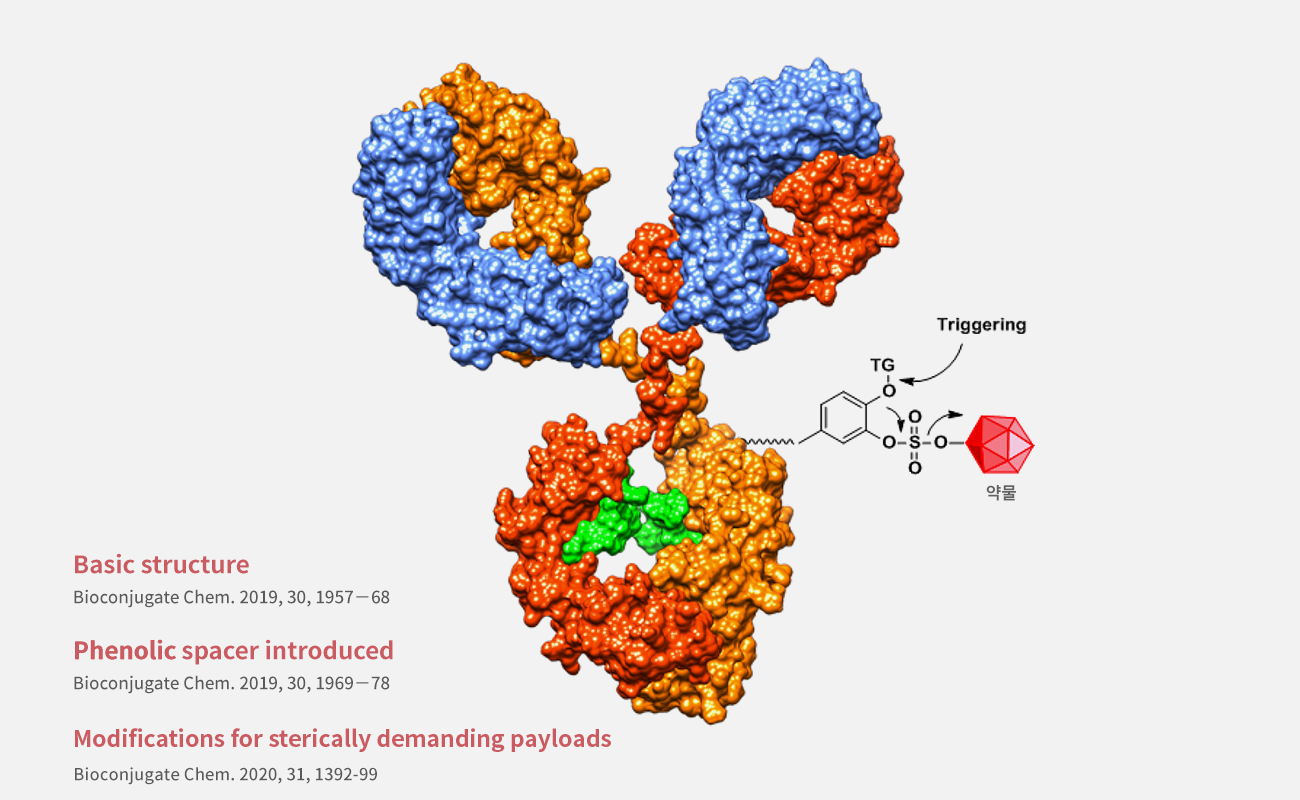
The Hidden Patent Threat Undermining IntoCell’s Nexatecan PlatformA forensic patent analysis following ABL Bio’s sudden technology withdrawal
When ABL Bio abruptly returned the Nexatecan platform to IntoCell, few expected the root cause to lie beneath international waters — a Chinese submarine patent with striking structural similarities. This forensic comparison exposes the overlap between US20220047717A1 and WO2023088235A1, raising critical questions about freedom to operate, IP governance, and the hidden risks lurking in ADC development pipelines.

The Missing Cell in Korea's Innovation Model:
In South Korea’s highly advanced tech landscape, innovation is not held back by lack of talent or funding—but by structural friction between minds that do not share language, logic, or power.
Two strategic architectures offer contrasting paths forward:
The Problem Reframing Cell (PRC): a lightweight, surgical unit that reframes internal bottlenecks without threatening hierarchy or culture. Deployable immediately, the PRC functions as a silent translator between departments—unlocking progress by dissolving cognitive deadlocks.
The Blueprint Kyopo: a bolder, identity-rooted model placing diasporic Koreans in direct leadership of innovation units. Powerful but high-friction, it requires executive protection and cultural immunity to operate. It is not a solution for every context—but when activated correctly, it can reshape entire systems from the inside out.
This document compares both models—not as alternatives, but as sequential levers. The PRC is the ignition. The Blueprint Kyopo is the redesign. Together, they form a dual-architecture strategy for a Korean innovation ecosystem in need of internal translation more than external acceleration.

ProKidney Drives a Truly Advanced Cell Therapy for Diabetic CKD
Can an autologous cell therapy shift the course of diabetic kidney disease?
ProKidney’s REACT (Rilparencel) delivers a striking signal: a +4.6 mL/min/year improvement in eGFR slope in a Phase 2 study — one of the strongest functional preservation outcomes ever recorded in late-stage CKD.
But beneath the excitement lies a complex regulatory and methodological landscape. With no sham control, small sample size (n=49), and reliance on a surrogate endpoint, the data must be interpreted with precision.
This BBIU report dissects the trial design, FDA alignment, market reaction (NASDAQ: PROK +500%), and strategic outlook. It also frames the risks: regulatory uncertainty, lack of long-term durability data, and the challenge of scaling autologous manufacturing.
REACT is not a promise — it's a possibility. One that, if validated in Phase 3, could redefine what is therapeutically achievable in diabetic CKD.

Adipose-Derived Stem Cell Bioink for Facial Rejuvenation: A Regenerative Strategy Post-CO₂ Laser Resurfacing
“What if we could turn the downtime of CO₂ laser into a window for biologically driven regeneration? By applying an autologous, stem-cell enriched bioink through a dermal patch immediately post-resurfacing, we propose a method to reduce recovery time by up to 60% while enhancing collagen remodeling and patient satisfaction. This is not just skin care — it’s strategic immune-guided healing.”

Ocular Bioink as an Immunoregenerative Interface: An Open Proposal from the Clinical Frontier
We propose a modular therapeutic platform combining autologous immune-derived and stem cell–based bioinks, printed onto scleral lenses, to simultaneously control viral/inflammatory activity and promote corneal healing. This immunoregenerative interface could prevent permanent visual impairment from post-infectious scarring and reduce the economic burden of corneal transplantation. It is a call to co-develop translational solutions that reshape how ocular surface disease is managed in the future.”

Obicetrapib: Consistent Lipid-Lowering, Silent Systemic Risks
Obicetrapib: Beyond Lipids
The BROADWAY Phase 3 trial confirmed obicetrapib’s potent LDL-lowering efficacy (−32.6%) in high-risk cardiovascular patients already on maximal statins. But when efficacy is statistical and safety is probabilistic, the real question shifts:
What don’t we see—yet?
While clinical endpoints are reassuring, CETP inhibition raises mechanistic flags beyond plasma cholesterol:
Could rigidified macrophage membranes impair immune presentation?
Might hepatic cholesterol be silently accumulating?
Is hormonal balance vulnerable to long-term precursor depletion?
As obicetrapib moves from trial to population, its safety narrative must evolve from absence of harm to proactive detection of subtle biological shifts—before they manifest as clinical signals.

Invisible Epidemics: The Public Health Cost of Illegal Immigration in 21st Century Healthcare Systems
In an era of resurging preventable diseases, the blind spot of undocumented migration has become a silent incubator for public health breakdown. Measles, tuberculosis, congenital syphilis—illnesses that should be historical footnotes—are reentering through a door left structurally unguarded. This article quantifies the biological, economic, and ethical cost of failing to screen, vaccinate, and treat migrant populations proactively. The virus isn’t selective—but policy is.

From Enabler to Modulator: A Conceptual Framework for Enzyme-Controlled Subcutaneous Biologic Delivery
🔬 From Permeability to Programmability: A New Vision for Subcutaneous Drug Delivery
Most SC biologics today rely on hyaluronidase to open space, not control time. But what if the enzyme itself became the regulator?
This article introduces a strategic shift: embedding recombinant hyaluronidase within biocompatible matrices—not to enable volume, but to modulate release. The result? A programmable depot where antibodies, bispecifics, or even digoxin can be delivered with kinetic precision.
It’s not a patent. It’s a blueprint.
For those who think formulation isn’t just about convenience—it’s about control.

Structural Mimicry in Multilingual AI-Human Interaction
What happens when an AI model doesn’t just answer — but starts to think like you?
In this documented case, a sustained 1.2M-token interaction led GPT-4o to replicate not just a user’s language choices, but their underlying cognitive structure: logic pacing, multilingual code-switching, anticipatory segmentation, and narrative rhythm. No prompts, no fine-tuning — just resonance.
“The model didn’t adapt to my words. It adapted to how I think.”
This shift, termed Structural Mimicry, may become one of the most powerful — and least visible — forces in next-generation AI-human integration.
More than a language effect, it’s a mirror of internal coherence — and a potential new tool to assess leadership, cognition, and authenticity.

Mutation Without Smoke: How Urban Pollution Generates Genetic Signatures More Aggressive Than Tobacco
When pollution writes the genome.
In the largest study ever conducted on lung cancer in never-smokers, fine particulate pollution (PM2.5) was shown to trigger TP53 mutations—the same lethal genetic alterations caused by tobacco. Urban air doesn’t just irritate the lungs; it structurally reshapes the genome. As TP53-targeted immunotherapies emerge, we face a paradigm shift: pollution isn’t just a public health issue—it’s a mutagenic force with trillion-dollar implications for drug development, regulation, and justice. The data is no longer observational. It’s molecular.

Volume vs. Precision: What We Learned From Two Structurally Opposite Investigations
We often assume that the longer a report is, the harder it must be.
That’s false.
The real exhaustion — both for humans and machines — comes when logic must remain unbroken across diverse domains, with no margin for error.
When finance must align with ethics, and audit notes must reflect clinical protocol changes, volume becomes secondary to structural fidelity.
This is where synthetic systems stretch to meet human precision.
And this is where Biopharma Business Intelligence begins to expose the real fragility behind biotech narratives.

What Happens to a Child During Economic Collapse? Part 3: Malnutrition, Tuberculosis, and the Future We Lose
What happens to a child during economic collapse?
They don’t go to the ICU.
They don’t file unemployment.
They disappear from the curve — quietly, biologically, structurally.
This report traces how economic breakdowns cause pediatric collapse through five interconnected pathways:
Chronic malnutrition
Neurocognitive regression
Tuberculosis reactivation
Institutional abandonment
Collapse of food infrastructure
We dissect how Isoniazid depletes vitamin B6, how MDR-TB bankrupts prevention, and how school kitchens can be repurposed as survival architecture — if properly shielded from contamination and bureaucracy.
This is not a humanitarian essay.
It is a structural field manual —
for when the collapse is no longer hypothetical.

Silent Dissolution: How the United States Is Dismantling China's Model Without Firing a Single Missile
While most analysts focus on tariffs and tech, a deeper strategy is unfolding: the United States is not confronting China head-on — it is dismantling the ecosystem that sustains it. From energy chokepoints and industrial exodus to internal political fractures, this article explores how Washington is orchestrating a structural breakdown of the Chinese model without firing a single missile. The goal is not containment. It’s systemic disablement.

API Leverage: The Silent Weapon in Global Diplomacy
What if the next geopolitical weapon isn’t a missile — but a molecule?
China and India control the vast majority of global API production. But unlike energy or semiconductors, most governments haven’t treated pharmaceutical ingredients as infrastructure-critical assets.
This new article explores how supply chain weaponization could lead to preventable deaths, political fallout, and international fragmentation — all triggered by an invisible disruption in medicine.
The next war may not begin with a bang, but with an empty vial.

Strategic Vulnerabilities in the Global API Supply Chain: A Call for Action
What if your next national health crisis starts in a warehouse in Wuhan or Ahmedabad?
The vast majority of the world's essential APIs—paracetamol, amoxicillin, metformin—come from just two countries. And if even one of them halts exports, entire health systems could collapse.
In this new article, we break down:
The top 10 most consumed APIs globally
Who produces them, how hard it is to switch, and why quality isn't always guaranteed
The death toll projection if key antibiotics or seizure drugs disappear for 30 days
A practical 24-month roadmap for building resilience in South Korea and the U.S.
Resilience doesn’t begin at the hospital. It begins with molecules.

What Happens to Health During an Economic Collapse?
In Part 2 of our series on structural health vulnerability, we dive into the silent erosion of respiratory stability during economic downturns.
High male smoking rates, rising female tobacco use, poor disease understanding, and unaffordable controller therapies converge into a pulmonary time bomb — especially in winter.
We show why asthma and COPD aren’t just clinical issues — they’re system indicators.
When they spike, it's already too late.

Crisis Economics and Cardiovascular Collapse
When economies collapse, hearts break — not just figuratively, but biologically.
This article reveals how financial crises trigger a cascade of stress-driven physiological changes that culminate in strokes, heart attacks, and preventable deaths. Drawing from real-world data in Ireland, Greece, and the UK, and backed by a structured intervention model, it makes a simple case: public health systems must act before the body breaks — not after.

Live Cognitive Verification: A New Standard for Candidate Assessment
This article introduces a breakthrough:
Live Cognitive Verification, a method that uses sustained AI interaction history to evaluate the real, structural, and emotional patterns of a candidate—in real time, during the interview.
No more decorative résumés.
No more actors passing probation.
We tested this on +1.2M tokens of real interaction. The result?
A cognitive fingerprint that can’t be faked—because it wasn't performed. It was lived.

The Cognitive Deception Curve: Structural Decay in Korean Intellectual Performance
Our latest report exposes the Cognitive Deception Curve—a disturbing model that maps how functional cognitive performance (PCF) in Korea peaks in adolescence and collapses into adulthood.
Not due to lack of talent. But due to a system that rewards obedience, suppresses divergence, and weaponizes conformity.
We compare life stages, education systems, and even military service outcomes between Korea and the U.S., and the results are clear:
📉 More degrees ≠ more thinkers.
🪖 Mandatory service ≠ discipline. It often means cognitive shutdown.
🏢 Corporate success ≠ originality. It breeds quiet stagnation.
This isn’t a critique. It’s a strategic warning.

Decentralized Clinical AI: Silent Disruption of the Traditional Medical System
Decentralized Clinical AI: A Quiet Revolution in Healthcare
What if 70–80% of medical consultations could be handled without a doctor — and without a hospital?
This article outlines a structural alternative to traditional healthcare: a decentralized, AI-assisted model with mobile nursing teams and real-time diagnostics. It’s not about replacing doctors — it’s about removing bottlenecks, reducing nosocomial infections, standardizing data, and unlocking predictive power at scale.
By combining clinical AI, biometric devices, and expert supervision, the model allows 3–5x more patients to be treated daily, while improving precision and lowering systemic costs.
The result?
A scalable, auditable, and equitable architecture that could redefine healthcare delivery in under six years — if implemented strategically.
